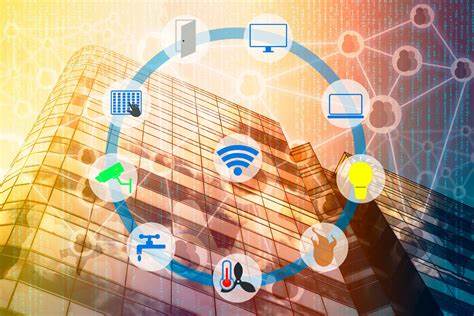
The Evolution of Building Automation: A Comprehensive Overview
Introduction
The Evolution of Building Automation has revolutionized the way buildings are managed and operated. This article provides an overview of the historical background, key concepts and definitions, main discussion points, case studies, current trends and developments, challenges or controversies, and future outlook of building automation. The article aims to remove identifiers like Roman numerals and letters in the subtitles to prepare it for publishing. Additionally, the article should be made more comprehensive by providing more value and depth to the reader.
Historical Background
Early developments in building automation: In the early days, building automation was limited to manual control systems. This approach had limitations in terms of efficiency and accuracy.
Introduction of mechanical and electrical systems: With the introduction of mechanical and electrical systems, buildings became more sophisticated and complex. These systems enabled the automation of basic functions such as heating, ventilation, and lighting.
Emergence of computer-based control systems: The emergence of computer-based control systems revolutionized building automation. These systems allowed for centralized control and monitoring of various building systems through a building automation system (BAS).
Key Concepts and Definitions
Building Automation System (BAS) and its components: A Building Automation System (BAS) is a centralized system that controls and monitors various building systems such as HVAC, lighting, security, and more. It consists of hardware and software components, including sensors, actuators, controllers, and a user interface.
Sensor technology and data collection: Sensor technology plays a crucial role in building automation. Sensors collect data on various parameters such as temperature, humidity, occupancy, and energy consumption. This data is then used for analysis, optimization, and decision-making processes.
Control algorithms and optimization techniques: Control algorithms and optimization techniques are used to analyze sensor data and make informed decisions to optimize building performance. These techniques aim to maximize energy efficiency, comfort, and cost savings.
Main Discussion Points
Evolution from manual to automated control systems: This section discusses the introduction of manual control systems in buildings, the adoption of early automated control systems, and the advancements in technology leading to enhanced automation.
Integration of building systems for improved efficiency: This section provides an overview of different building systems and highlights the importance of integration for energy management and cost savings. It also discusses the benefits and challenges of integrating various systems.
Shift towards data-driven decision making: This section explores the introduction of data analytics in building automation, the utilization of sensor data for predictive maintenance, and the real-time monitoring and optimization of building performance.
Case Studies or Examples
Example: Retrofitting a commercial building with advanced automation systems: This example details the retrofitting of an existing commercial building with advanced automation systems and discusses the impact on energy consumption.
Example: Smart building technology in a residential complex: This example showcases the integration of various systems in a residential complex and highlights user feedback and satisfaction with the automated features.
Current Trends or Developments
Internet of Things (IoT) and its impact on building automation: This section explores how the Internet of Things (IoT) has revolutionized building automation by enabling connectivity and communication between devices and systems.
Cloud-based solutions for remote monitoring and control: This section discusses how cloud-based solutions enable remote monitoring and control of building systems, improving efficiency and reducing maintenance costs.
Artificial intelligence and machine learning in building automation: This section explores the use of artificial intelligence (AI) and machine learning (ML) algorithms in building automation for advanced analytics, predictive maintenance, and optimization.
Challenges or Controversies
Privacy and data security concerns in smart buildings: This section addresses concerns regarding privacy and data security in smart buildings and emphasizes the need for measures to protect sensitive information.
Compatibility issues between different building systems: This section highlights the challenges related to compatibility when integrating different building systems and emphasizes the importance of interoperability.
Resistance to change and lack of awareness among building owners: This section discusses the resistance to change and lack of awareness among building owners, which can hinder the adoption of building automation technologies.
Future Outlook
Increased adoption of advanced automation technologies: This section predicts increased adoption of advanced automation technologies in buildings, further enhancing energy efficiency, occupant comfort, and overall building performance.
Integration of renewable energy sources and grid interaction: This section discusses the integration of renewable energy sources into building automation systems, making buildings active participants in the energy grid.
Potential for autonomous and self-learning buildings: This section explores the potential for autonomous and self-learning buildings that continuously adapt and optimize their performance based on occupant preferences, environmental conditions, and energy availability.
Conclusion
The Evolution of Building Automation has transformed the way buildings are managed, operated, and experienced. From manual control systems to advanced automation technologies, the continuous advancements in building automation have resulted in improved energy efficiency, occupant comfort, and operational efficiency. It is essential to recognize the significance of building automation and continue to explore further research and development in this field.